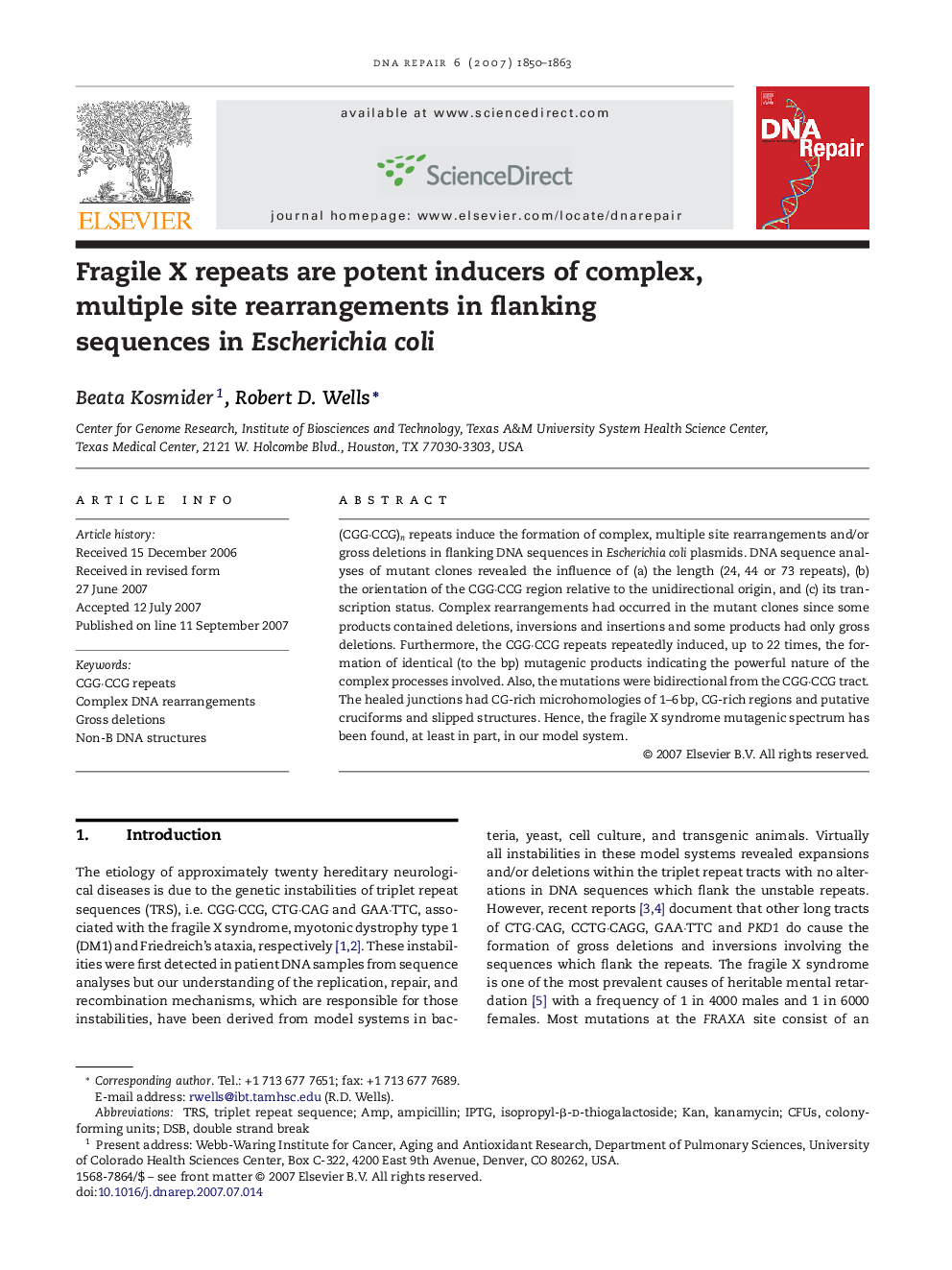| Article ID | Journal | Published Year | Pages | File Type |
|---|---|---|---|---|
| 1980940 | DNA Repair | 2007 | 14 Pages |
(CGG·CCG)n repeats induce the formation of complex, multiple site rearrangements and/or gross deletions in flanking DNA sequences in Escherichia coli plasmids. DNA sequence analyses of mutant clones revealed the influence of (a) the length (24, 44 or 73 repeats), (b) the orientation of the CGG·CCG region relative to the unidirectional origin, and (c) its transcription status. Complex rearrangements had occurred in the mutant clones since some products contained deletions, inversions and insertions and some products had only gross deletions. Furthermore, the CGG·CCG repeats repeatedly induced, up to 22 times, the formation of identical (to the bp) mutagenic products indicating the powerful nature of the complex processes involved. Also, the mutations were bidirectional from the CGG·CCG tract. The healed junctions had CG-rich microhomologies of 1–6 bp, CG-rich regions and putative cruciforms and slipped structures. Hence, the fragile X syndrome mutagenic spectrum has been found, at least in part, in our model system.
